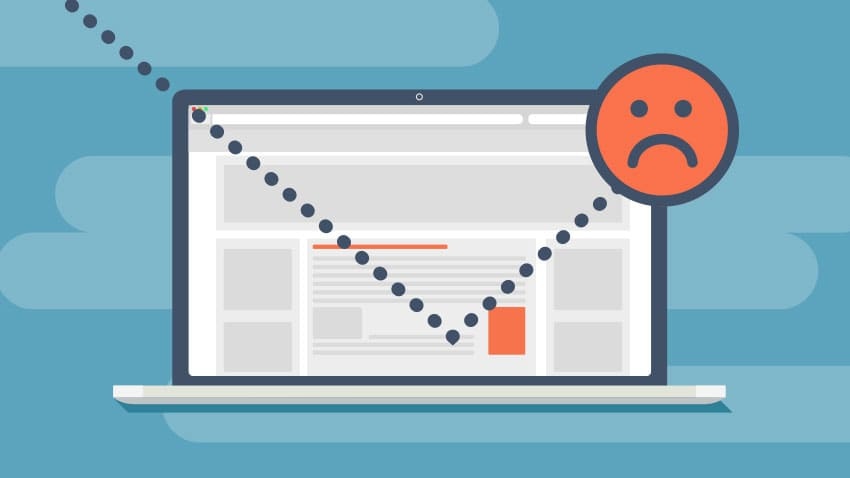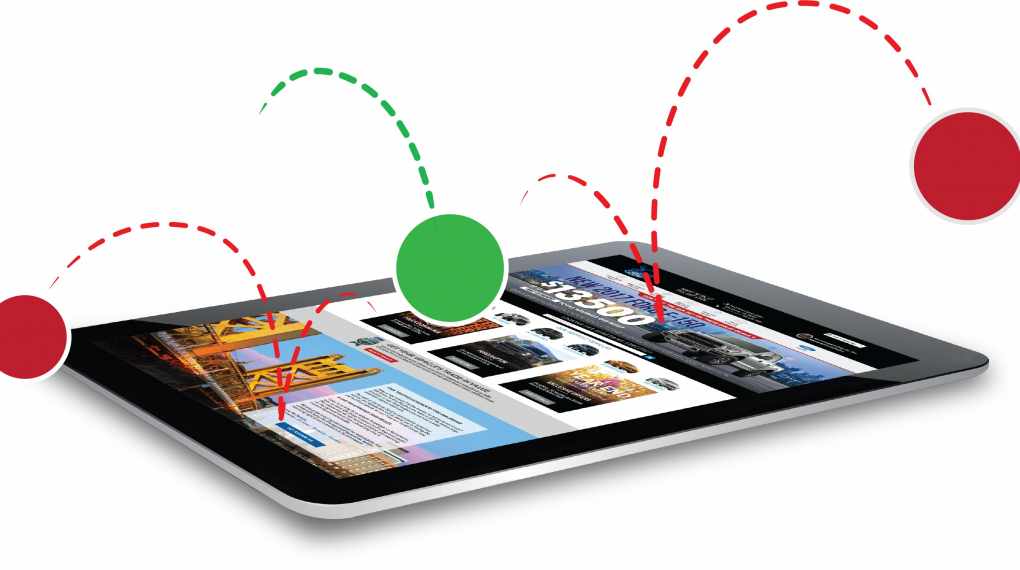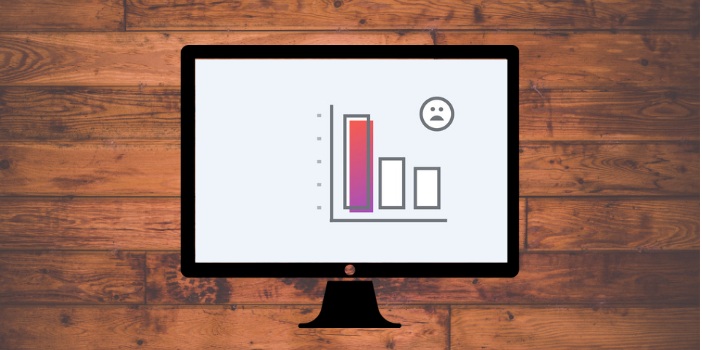9 Tips On How To Effectively Reduce Your Website’s High Bounce Rate

When you first create a website for your business, you might think that the hard work is done and that all you have to do now is wait for your potential customers to discover you and then buy your products or services. Oh, if only things were that easy… Sure, you might decide to create that site with some thoughts like these in mind, but you will soon realize that it takes much more work to actually get noticed and have those customers stick around on your site long enough to be motivated into buying something. In other words, you’ll realize right away that there’s much more work to do. During performance analysis, you’ll start getting acquainted with a lot of different terms and concepts that you will need to pay attention to if you want your site, and thus your business, to be any successful. One of the terms that you will get acquainted with rather quickly is “bounce rate”. Although it might sound like something good when you first hear about it, you’ll immediately realize that it is far, far from a good thing. This particular concept is thoroughly explained on this page, so make sure to read it if you have no idea what it is. Here you will learn to reduce your website’s high bounce rate.
What Is A Bounce Rate?
Since I have started talking about it, it would be pretty rude and irresponsible of me not to explain what it actually is. Of course, I will do much more than that. If you stick around, you’ll get quite a lot of useful tips on how to effectively reduce your website’s bounce rate. In order to understand why this is something that needs to be reduced, though, you will need to learn precisely what it is, so let me start by offering you a quick definition.
In simple terms, a bounce rate represents the number of visitors that take a look at one of your pages and then leave without sticking around to explore some more. This number is, as you might have guessed it, represented in percentages, hence the term “bounce rate”. The act of leaving the site without exploring it further could be called bouncing here, but I suppose that you might have guessed that all on your own.
Now, you are undoubtedly curious about how this rate is calculated, so let me explain that for you. If you use your logic, you will probably manage to figure out the formula yourself. Yet, since I am not trying to test your logic, or your math, skills here, I’ll simply tell you how this specific rate is calculated. Basically, all you have to do is divide the number of single page visits with the number of total site visits.
If that sounds like too much work, although I am pretty sure it doesn’t, then you will love to hear this. Most of the tools that you will use for analysis will calculate your bounce rate for you, meaning that you won’t have to do it manually. In any case, learning how to calculate it will most certainly help you better understand what it actually is – i.e. the ratio between single page visits and total visits.

What Is A Good Bounce Rate?
Now that you know what a bounce rate actually is, I am sure that you understand precisely why having a high one is not that good for your website, and your business for that matter. Having people leave your site moments after visiting a single page is not quite great for business, since it means that they aren’t checking out the rest of your pages, products and services, which further means that they aren’t buying those. In few words, a high bounce rate is a huge no-no.
Read this to check if it is always that bad: https://martech.org/high-bounce-rate-always-bad-plus-improve-bounce-rates/
The above leads us to an important question. What is a good bounce rate? While this most certainly depends on the industry that you are in, as well as on the content that you are providing people with, I can still give you some average numbers to help you understand what a good rate is. Basically, anything between 30% and 50% is amazing, 50% to 70% is average, and anything higher than that should be a cause for concern.
At one point, you might find your bounce rate to be below 20%. While that sounds like something you should celebrate, I would advise you not to get your hopes up right away. This is most likely a calculation error that can occur due to many different reasons. So, to sum things up, I’d say that you are doing great if this percentage is anywhere between 30% and 70%.
How To Reduce It?
If you found that the percentage is higher than what I have mentioned above, then you should start thinking of methods that you can use to reduce it. This is a sign that something is wrong with your sites and that you aren’t keeping people interested enough in checking your business out further, which is certainly not good for you. I suppose it goes without saying that action needs to be taken towards achieving a reduction in those numbers if they are high.
Fortunately for you, this is a problem that is pretty much solvable. To put it differently, you can learn how to reduce your website’s bounce rate and then use the tricks and tips that you’ve learned to keep that number as low as possible. Here’s some more good news for you. I’ve decided to give you a few tips right here, so keep reading to get those and thus make some necessary improvements to your website. Those improvements are bound to make a huge difference, so let’s check those tips out.
- Check Page Load Time & Improve It

One of the first things that should pop in your mind when you notice a high bounce rate is the loading time on your site. In simple words, if your pages take too long to load, chances are that people will lose patience and simply leave. Sure, the problem is often much more complicated than that, but the truth is that this can very well be the reason for seeing that high percentage in your analysis report. So, before you start digging deeper, I suggest you check the loading speed and improve it if possible.
- Optimize Your Content To Be Highly Relevant
As you might have correctly assumed, your content will most likely be the reason for your lack of success here. If you are targeting certain keywords, then you should make sure that the content you are providing is relevant to those keywords. If you are targeting, say, the keywords “chocolate milk” and your potential customers click through only to see that you are actually talking about daisies or regular milk at best, then you can rest assured that they won’t have the desire to check out the rest of your site.
To put things simply, your content shouldn’t be irrelevant, or only mildly relevant, to the keywords that you are targeting. If you want your visitors to stick around, you’ll need to offer them highly relevant content. Otherwise, you will just get them frustrated and they’ll leave your site pretty quickly. So, make sure to optimize your content if you are planning for people to stick around.
- Be Smart When Formatting
No matter how relevant or engaging your content might be, people are highly unlikely to read it and stick around if it isn’t properly formatted. If it all appears just so cluttered and long, without any breaks, headlines, subheadings, images and stuff like that, then your readers will just get intimidated and start feeling pretty overwhelmed, which will lead to them wanting to find a different source of information – one that won’t make them work too hard in order to get the information they need.
Formatting is an extremely important aspect of all your content, which is why you shouldn’t take it for granted. Instead, learn precisely how you can make your content more appealing with proper formatting and don’t forget to use those tricks. Of course, you shouldn’t take it too far here either, since having too many images or line breaks can also be rather annoying. Moderation is the key.
- Make Your Search Bar Prominent
Say your visitors have ended up on one of your pages and a thought pops in their mind. They want to find something specific and they believe that your website could provide them with the information they need. Yet, they don’t feel like spending too much time searching for that, but they cannot seem to find a search bar on your page. What do you think they’ll do? They’ll leave and just type their question in that large search bar in their browser.
If you don’t want that to happen, then you should do your best to make your search bar rather prominent on your site. I’m sure that you have already added this option to your pages, but the bottom line is that people will leave if they don’t see it right away. Simply put, having a search bar is not enough. You also need to make it stand out.
- Offer Live Chat Help

Here is a similar tip that could help you reduce your bounce rate (additional info) and it also has to do with people getting answers to their question. Picture the above scenario and think about whether your visitors would leave if they had the option to get immediate help and assistance in finding what they want. I’m sure you understand that something like this would most definitely make them stick around. That’s why offering the live chat help option is a great idea that could turn more visitors into customers instead of scaring them away. Alternatively, more businesses opt for a Facebook chatbot or some other messenger chatbot like WhatsApp or Telegram. This not only reduces the bounce rate but also takes some pressure off the customer support.
- Make Your CTA Clear
As you probably already know, every great page should have a call to action. In case the CTA action is not clearly identifiable and doesn’t stand out, chances are that you won’t have any luck in getting those visitors to actually take action. So, don’t forget to make your CTA stand out and be perfectly clear, because that’s another great step towards reducing your bounce rate.
- Turn Off Auto-Play
Few things are more annoying then opening a web page and then trying to discover where all the noise is coming from. Whether it’s music, or someone talking, the truth is that it will frustrate your visitors and cause them to either turn their volume down or click that little X button that will allow them to leave your site right away. While it’s perfectly fine and even advisable to have videos on your site, as it is a good marketing technique, one thing is for sure. You should turn auto-play off, unless your plan is to scare off a large amount of your visitors.
- Check If The Ads Are Intrusive
Speaking of things that can scare people off, ads have always been one of those. Now, this doesn’t mean that you shouldn’t have any ads on your site. It simply means that you should make them less intrusive. If your visitors are trying to read something on your website and then an ad pops up right over the content, they will most likely get extremely annoyed and conclude that it’s not worth reading any further.
- Make Navigating Easy
I am sure you understand that the overall design of your site undeniably plays a huge part in the reduction of your bounce rate, because if the design isn’t appealing enough, people are unlikely to stick around. Yet, there is one particular thing about design that you should pay special attention to and it also has to do with functionality. I am talking about website navigation. You should make navigating rather easy, so that your visitors aren’t overwhelmed with trying to find some of your pages that they want to check out.